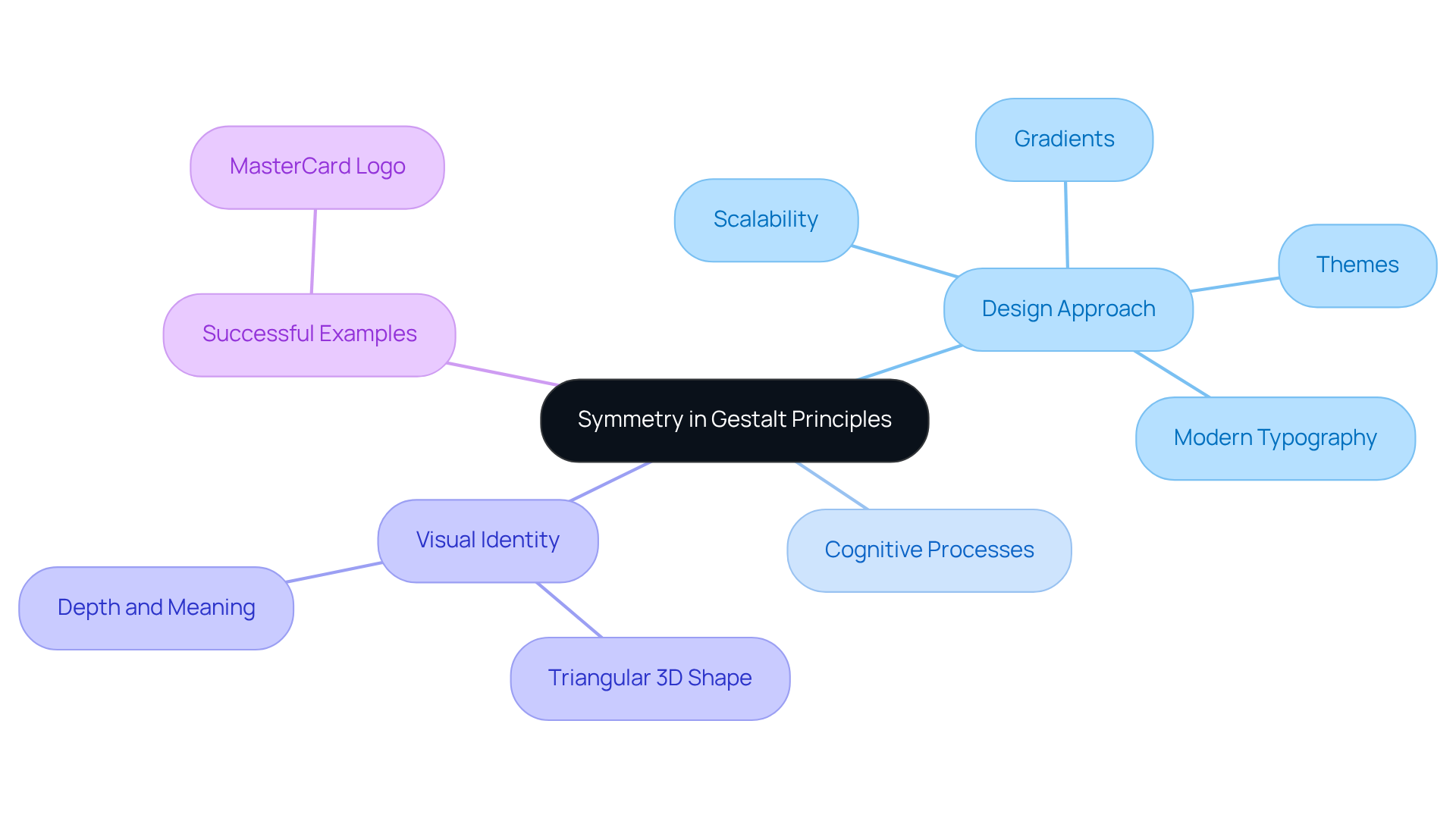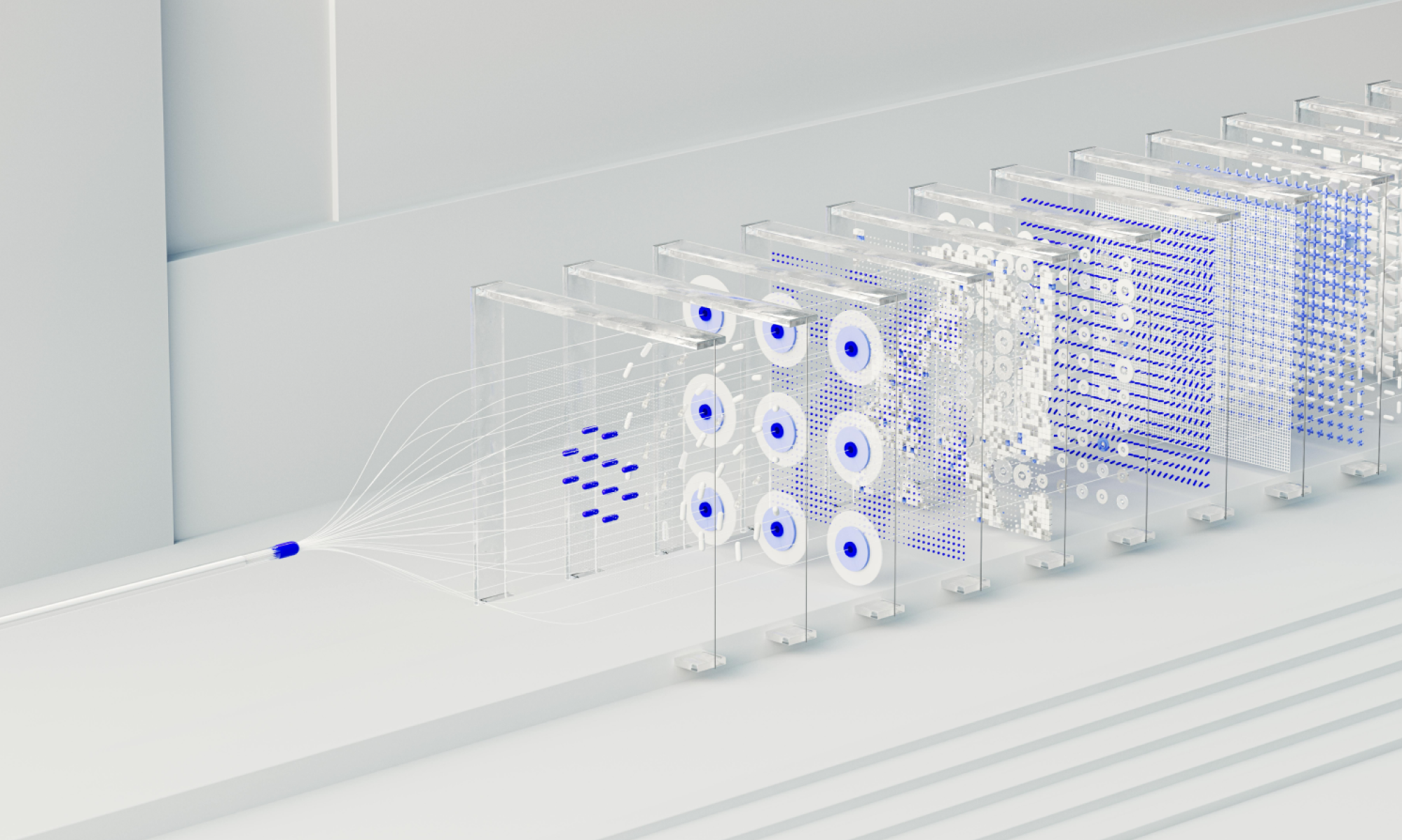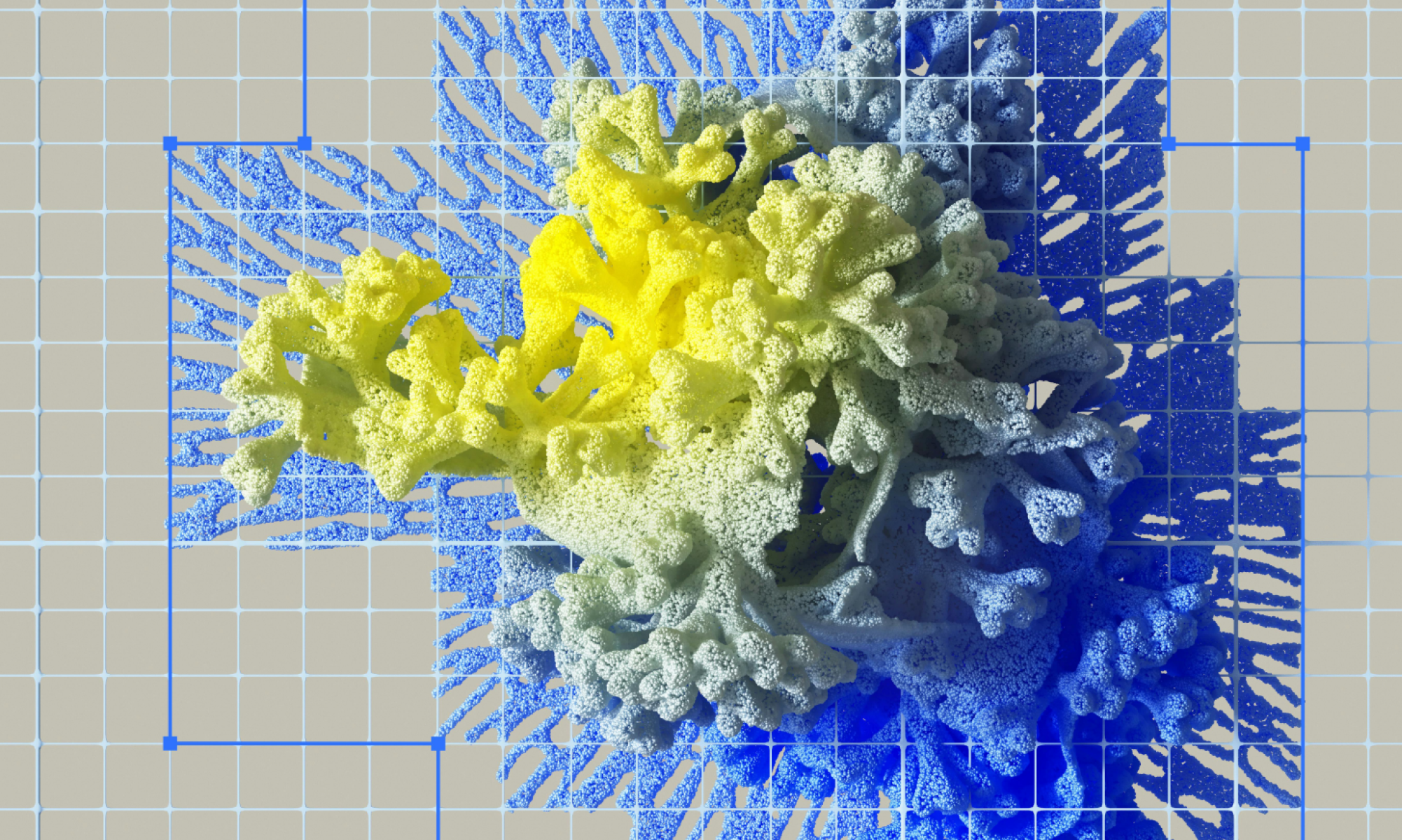AI
our blog
Enhance User Experience with Symmetry in Gestalt Principles

Overview
The article delves into the principle of symmetry within Gestalt psychology, illustrating how it significantly enhances user experience in design. By creating visually appealing and intuitive interfaces, symmetry serves as a critical element in effective design strategies. Techniques such as grid systems and mirroring elements are outlined, demonstrating their role in improving usability and engagement. Furthermore, the article underscores the necessity of user feedback and analytics in evaluating the effectiveness of symmetrical designs, reinforcing the idea that informed design decisions lead to superior user experiences.
Introduction
The allure of symmetry captivates not only the eye but also the mind, playing a pivotal role in how individuals perceive and interact with visual elements. By harnessing the principles of Gestalt, designers can create interfaces that are aesthetically pleasing and enhance user experience through intuitive navigation and emotional engagement. However, a significant challenge persists: how can designers effectively implement symmetry without succumbing to monotony? This article delves into the transformative power of symmetry in design, exploring techniques and strategies that elevate user satisfaction while maintaining visual interest.
Understand Symmetry in Gestalt Principles
Symmetry in creation represents the balanced arrangement of elements, fostering harmony and order. Grounded in Gestalt principles, our cognitive processes naturally gravitate towards symmetry gestalt and patterns of balance. This inclination makes balanced structures not only visually appealing but also easier to comprehend. In revitalizing Volograms' visual identity, we focused on a new triangular 3D shape that pays homage to the former logo while introducing depth and meaning, effectively showcasing the company's innovative technology. This strategic application of symmetry gestalt not only enhances aesthetic appeal but also significantly boosts engagement and satisfaction, as individuals find symmetrical layouts more intuitive and navigable.
Key aspects of our design approach include scalability, ensuring that the visual identity can evolve over time. We incorporated modern typography and gradients to enhance the overall interface, alongside creating both light and dark themes to cater to diverse preferences.
For instance, the engaging animations integrated into the website and application design exemplify how balance can delight users with every scroll or mouse movement. However, designers must remain vigilant against common pitfalls, such as excessive balance, which can diminish visual interest. Highlighting successful examples, like the MasterCard logo, which effectively showcases balance and symmetry gestalt, further illustrates the practical application of these principles in crafting captivating interfaces.

Leverage Symmetry for Enhanced User Experience
To utilize balance effectively, designers must consider several key strategies.
- Visual Hierarchy plays a crucial role in creating a distinct visual hierarchy, guiding users' focus to essential components. A balanced layout, for instance, enables users to swiftly recognize navigation menus or call-to-action buttons.
- Consistency is vital; maintaining symmetry across various screens and components fosters a cohesive experience. This consistency not only enhances user comfort but also instills confidence while interacting with the product.
- Furthermore, symmetry gestalt is significant; symmetrical arrangements often elicit positive emotional responses, encouraging user engagement with the content.
- Research indicates that users perceive symmetrical logos and interfaces as more trustworthy and professional, ultimately enhancing brand loyalty.

Implement Symmetry Techniques in Design Projects
Achieving symmetry gestalt in design projects can be effectively accomplished through various techniques.
-
Grid Systems: Implementing grid systems establishes a structured layout that naturally encourages balance. These grids enable designers to align elements consistently, resulting in a balanced and harmonious composition. Studies suggest that grid-oriented layouts boost readability and flow, greatly enhancing the experience for users by improving navigation and usability.
-
Mirroring Elements: Employing mirroring elements on either side of a central axis when designing interfaces is particularly advantageous. This technique enhances aesthetic appeal and improves usability, especially in forms and dashboards. Research indicates that using symmetry gestalt in patterns can lead to a 20% increase in user satisfaction, fostering a sense of organization and predictability.
-
Symmetry Tools: Utilizing creation tools that facilitate symmetry, such as Adobe Illustrator's symmetry mode or Figma's alignment features, simplifies the design process. These tools allow for rapid adjustments and iterations, resulting in more efficient workflows and higher-quality outcomes.
-
Participant Evaluation: Conducting participant evaluations to gather opinions on balanced layouts is essential. Understanding how individuals engage with symmetrical components provides significant insights for future projects, ensuring that designs are not only visually appealing but also functionally effective. Professional insights indicate that integrating feedback from users into the development process can enhance the overall efficacy of balance in interface layouts, leading to increased interaction and functionality.

Assess the Impact of Symmetry on Design Effectiveness
To evaluate the impact of symmetry on design effectiveness, several methods can be employed.
-
Analytics: Utilize analytical tools to track engagement metrics, such as click-through rates and time spent on pages displaying balanced layouts. Research shows that the typical performance score for usability tasks is 8.62, implying that symmetry might improve interaction and satisfaction.
-
A/B Testing: Implement A/B tests to compare balanced and unbalanced layouts, assessing which configuration yields higher client satisfaction and task completion rates. Studies indicate that individuals frequently favor designs characterized by symmetry gestalt, which results in enhanced engagement metrics. Notably, 75% of individuals assess a company's trustworthiness based on the appearance of its online presence, highlighting the significance of visual presentation in the overall experience.
-
Participant Feedback: Gather qualitative insights from individuals about their experiences with symmetrical layouts. Surveys and interviews can reveal how symmetry influences perceptions and interactions, providing valuable insights into preferences. As Florence Jeannot observes, "Visual aesthetics plays a huge role in user perception," emphasizing the importance of user feedback in decision-making.
-
Iterative Creation: Continuously improve models based on evaluation results. If balance shows effectiveness, consider broadening its application in upcoming projects while also investigating creative uses of asymmetry where fitting. This iterative approach ensures that design choices are informed by user data and feedback, ultimately enhancing the overall user experience. Furthermore, it is crucial to be aware of common pitfalls in applying symmetry, such as overusing symmetrical elements, which can lead to a lack of visual interest.

Conclusion
The role of symmetry in design, particularly through the lens of Gestalt principles, underscores its profound impact on user experience. By emphasizing balance and harmony in visual arrangements, designers can craft interfaces that are not only aesthetically pleasing but also intuitive and engaging. This strategic incorporation of symmetry fosters a sense of order that resonates with users, enhancing their overall interaction with the product.
Key strategies for leveraging symmetry include:
- Establishing a clear visual hierarchy
- Ensuring consistency across various components
- Utilizing techniques such as grid systems and mirroring elements
Each of these approaches contributes to a more organized and satisfying user experience, as evidenced by research showing that symmetrical designs can significantly enhance user satisfaction and brand perception. Moreover, the importance of incorporating user feedback and conducting evaluations further reinforces the need for a thoughtful application of symmetry in design projects.
Ultimately, embracing symmetry transcends mere visual appeal; it serves as a powerful tool for improving user engagement and satisfaction. As designers explore the principles of symmetry, they are encouraged to remain mindful of the balance between symmetry and visual interest. By doing so, they can create compelling interfaces that not only attract users but also foster lasting connections, thereby reinforcing the significance of thoughtful design in shaping user experiences.









